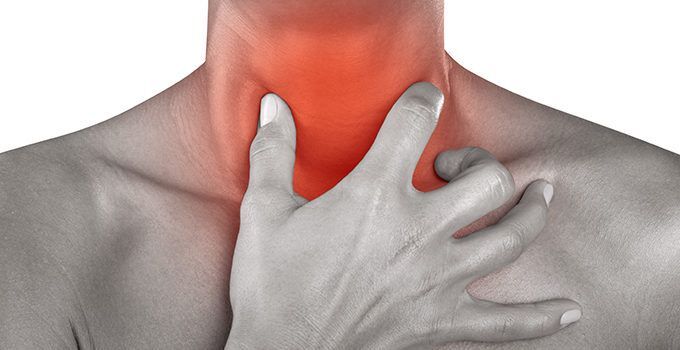Comprehensive Vertigo & Dizziness Management | Pacific View EN
About
Patients frequently complain of dizziness, which can have many possible causes unrelated to the balance organ in the inner ear. Fainting attacks, heart problems, thyroid issues, and brain disorders can all lead to feelings of “light-headedness,” “giddiness,” and general imbalance. However, Vertigo Dizziness is a specific form of dizziness, often linked to problems with the inner ear. Vertigo refers to the sensation that either the environment is moving in relation to the patient or the patient is moving in relation to the environment. It is typically a spinning or rotatory sensation. Vertigo Dizziness is most commonly associated with inner ear disorders. In fact, ninety-nine percent of people who suffer from vertigo due to inner ear problems will recover with time, without any treatment. The ability to maintain balance is dependent on three systems—the eyes, joints, and the inner ear—which all provide crucial information to the brain.
Various factors can affect the inner ear and cause vertigo. One way to distinguish different types of vertigo is by the duration of the dizziness. Short-lived episodes of dizziness, lasting only a few seconds to minutes, are commonly caused by benign paroxysmal positional vertigo (BPPV), which typically comes on suddenly. It is often triggered by suddenly looking upwards or sideways, or when turning over in bed. BPPV can sometimes start after a whiplash injury or other head trauma, though there is often no obvious cause. Medium-length episodes of dizziness, lasting from a half-hour to several hours, are rarer and may be linked to Menière’s disease or endolymphatic hydrops. These conditions cause severe vertigo accompanied by hearing loss and tinnitus, with symptoms lasting up to several hours. While hearing generally recovers once the vertigo resolves, it may deteriorate gradually over time. Longer episodes of dizziness, lasting days to weeks, are typically caused by infections like labyrinthitis (inner ear infection) or vestibular neuronitis (inflammation of the balance nerve). These conditions result in severe, rotatory dizziness that can last up to two or three weeks, with a slow return to normal balance, often accompanied by vomiting. Additionally, Sinus Infection Vertigo can cause dizziness due to pressure changes in the ear or head during a sinus infection, leading to a sensation of imbalance or vertigo-like symptoms.
To diagnose the cause of dizziness, specialist investigations are often required. These may include hearing tests, balance assessments, blood tests (though rarely), and imaging studies such as MRI or CT scans. These tests help identify the specific cause of Vertigo Dizziness and guide appropriate Treatment for Vertigo. In general, Treatment for Vertigo is symptomatic, aiming to control the symptoms without necessarily addressing the underlying cause. Treatment approaches may include rehabilitation exercises designed to speed up the brain’s natural compensation after inner ear disease. These exercises can help hasten recovery and improve balance. In cases where medical treatment is ineffective, vestibular sedatives may be prescribed to alleviate symptoms of Vertigo Dizziness. If conservative measures fail, surgical options may be considered, ranging from the insertion of an ear tube to more invasive procedures that involve destroying the inner ear or dividing the nerves leading from the inner ear to the brain. Recent advancements in Treatment for Vertigo also include the use of drugs delivered directly into the ear through the ear drum, which can selectively target the inner ear’s balance mechanisms without affecting hearing. However, this treatment carries a risk of potential hearing damage.
In conclusion, while Vertigo Dizziness can be caused by various factors, particularly those related to the inner ear, the appropriate treatment—whether rehabilitation, medication, or surgery—can help manage symptoms and speed up recovery.
Top Ear Infection Treatment in Ventura | Ventura ENT Clinic
The three most common Types of Ear Infections are otitis externa, otitis media, and otitis interna. Otitis externa, also known as an outer ear infection or swimmer’s ear, typically occurs when water gets trapped in the ear canal, leading to bacterial or fungal growth. Otitis media, an infection of the middle ear, is often caused by bacteria or viruses, commonly following a cold or respiratory infection. Finally, otitis interna, also known as an inner ear infection or labyrinthitis, affects the deeper parts of the ear, often leading to more serious symptoms like vertigo, hearing loss, and imbalance. Common symptoms of Ear Infections across all types include pain, discharge, itching, deafness, imbalance, and sometimes a ringing in the ears. The severity of these symptoms can vary depending on the type of infection and the individual's overall health. Treatment for ear infections is generally aimed at alleviating symptoms and addressing the underlying cause. Ear Infection Treatment may involve antibiotics or antifungal medications for bacterial or fungal infections, respectively. In some cases, over-the-counter pain relievers and ear drops may be sufficient. However, when ear infections become chronic or more severe, Ear Infection Surgery may be required. Surgical intervention is typically necessary when there are complications like persistent fluid buildup, a ruptured eardrum, or damage to the inner structures of the ear. In such cases, surgery helps to drain fluid, repair damage, or prevent further complications. The choice of treatment depends on the type and severity of the infection, and it's always important to consult with a healthcare professional for proper diagnosis and care.
- Location USA [map]






